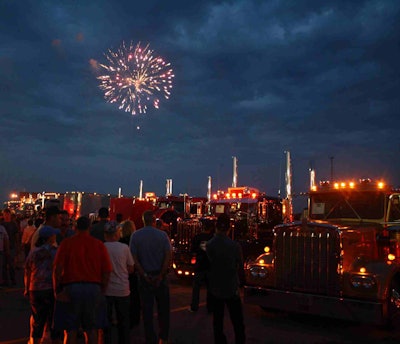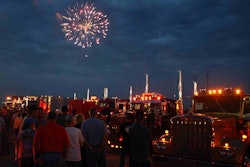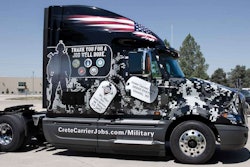The Federal Motor Carrier Safety Administration is seeking comment on two exemption requests it has received recently. A summary of each can be seen here.

Illumination Fireworks and ACE Pyro have requested a renewal of their exemption from the daily 14-hour rule for the period of June 28 through July 8 for the next five years.
The companies were previously granted the exemption for drivers of 50 commercial trucks during the Independence Day period of 2015. The application states the exemption would only apply to the operation of drivers of 50 vehicles in conjunction with staging fireworks shows around July 4.
During that time period, the drivers employed by the exempt companies would be allowed to exclude off-duty and sleeper berth time of any length from the calculation of their on-duty 14 hours. However, the drivers would not be allowed to drive after 14 hours of on-duty time, would still need to take 10 consecutive hours off and would continue to be subject to the 11-hour driving limit and the 60- and 70-hour on-duty limits.
The companies requesting the exemption argue they’d operate more safely under it that current HOS rules. Fireworks haulers, they say, would be unable to return to their home base after each show should they have fireworks remaining after the display. They’d then be forced to park in areas less secure than their home bases.
FMCSA is opening the comment period for 30 days after the request is published in the Federal Register on March 16. Comments can be made by searching Docket no. FMCSA-2014-0111 at www.regulations.gov.

FMCSA is seeking public comment on an exemption application from the Great Lakes Timber Professionals Association that would allow GLTPA carriers in Wisconsin to use cargo securement methods that don’t comply with current regulations.
The exemption is for securing shortwood logs transported lengthwise in crib-type vehicles that have been modified or manufactured without front structures, rear structures, or which have a center-mounted crane for loading and unloading, the request states. The GLTPA wants to use fewer tiedowns than regulations require.
The GLTPA says in its request that the “Cargo Securement Enforcement Policy” memo from the FMCSA in 2003 suggests “end stacks not protected by front and rear structures, but contained by stakes, bunks, or standards, would require one tiedown.” Because of this language, the association adds that crib-type trailers without front and rear structures would require one tiedown on each of the end stacks. GLTPA said the interior stacks, which are protected by the end stacks, should not be required to have tiedowns if they’re loaded in accordance with regulations.
“With the front and rear stacks secured, the configuration is essentially now acting as a crib-type vehicle,” the request states.
The GLTPA says it partnered with the Wisconsin State Patrol Motor Carrier Enforcement Section to test the use of a single tiedown on a stack of logs contained in a crib-type configuration. A load was subjected to various simulated longitudinal G forces, the request states, and the testing showed “a single tiedown, on average, was able to maintain a stack of low-friction logs under winter conditions to approximately 0.5 G. The average was increased to 0.63 G for high-friction hardwood logs.”
GTPLA and the Wisconsin State Patrol believe the exemption will “provide relief to the timber industry without compromising safety,” the request states.
FMCSA is opening the comment period for 30 days after the request is published in the Federal Register on March 16. Comments can be made by searching Docket no. FMCSA-2016-0081 at www.regulations.gov.













